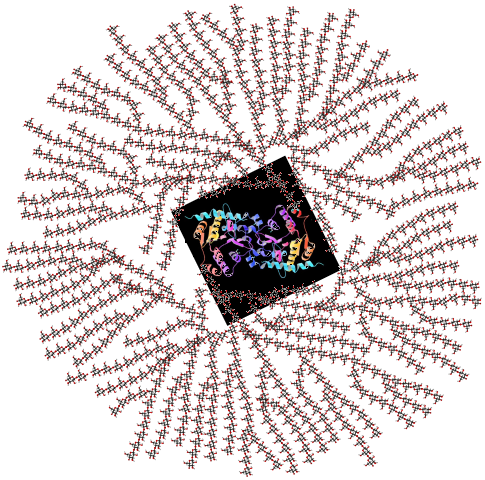
Glucose-Glycogen Cycle

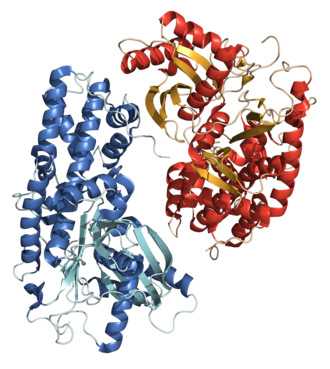

Carbon is in grey, oxygen red and hydrogen white.
 | Glucose-Glycogen Cycle |  |
| Glycogen, in analogue creatures a protein called Glycogenin is surrounded by chains of glucose units. In Creatures it is much simpler, a triple unit of glucose. |  | Hexokinase, in analogue creatures is a type of protein catalyst called an enzyme. In Creatures it is a hormone that is generated by activity and used up in the respiration proccess. |
| This is Glucose, a six carbon molecule. Carbon is in grey, oxygen red and hydrogen white. |
This is the core of creature biochemistry Glycogen is literally what is measured as Life Force and is typically 77% in healthy unmutated creatures.
In a nornal creature, one gene is responsible
for the enzyme that allows three glucose to turn into one glycogen,
another gene codes for
the enzyme that turns it back again.
This means that glycogen and glucose are interchangeable, but glucose will usually
out-number glycogen,
at whatever health levels the creature has, the glucose and glycogen converts back and forth in a complementary fashion.
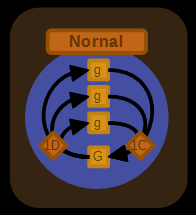
Immortality from the G-g Cycle
Various mutations can cause a runaway proliferation of glucose and or glycogen,
this inevitably causes immortality.
This is detailed on this page.
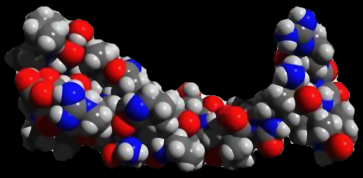
Ghrelin is a hormone that controls hunger
Digestion and the G-g Cycle
The only natural way an unmutated creature can get more glucose or
glycogen is by eating, food contains starch that breaks down into glucose.
Although they can receive intravenous glucose from Energy
injections or via injections from 3rd Party cobs such as the Autodoc.

The image above shows the stages of eating:
(1) food is eaten, starch levels shoot up and hunger plummets.
(2) As starch is broken down, glucose rapidly increases to maximum.
(3) Glycogen levels begin to build up after a time lag, glucose levels remain at maximum.
(4) Starch finally runs out, glucose levels begin to fall to normal levels, glycogen
gradually levels out at 77%,
assuming the norn is healthy and well fed
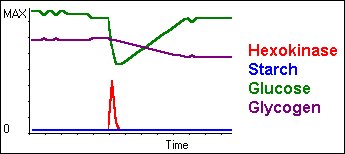
Hexokinase is the main reason for loss of glucose, it is produced by the muscles and breaks down glucose to provide energy for movement. In this experiment a norn was injected with hexokinase (far above normal amounts).
Hexokinase quickly peaks and plummets, glucose plummets then climbs relatively slowly as it is replaced by glycogen being broken down. An equilibrium is reached, but with both glucose and glycogen being at levels lower than before.
Note that in normal situations, hexokinase production is continuous, but considerably higher in active norns than resting norns.
Other Influences on The Glucose-Glycogen Cycle
Other chemicals that remove glucose are the antigens, adrenaline & gonadotrophin. This is because it takes energy to produce antibodys from antigens, when a creature produces adrenaline it needs to be more active, gonadotrophin shows the "eating for two" effects of pregnancy.
Glycotoxin is a poison present in the Deathcap
mushroom, it rapidly consumes glycogen, an extremely dangerous reaction.
Geddonase is a
similar but less severe toxin, present in the bites of cave flies.
Most notably, gene variations can effect this cycle, including genetic modification as well as natural mutations.